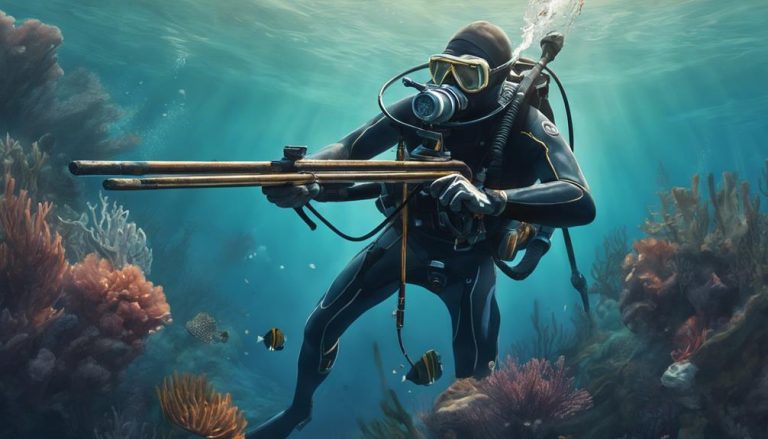General Rules of Flyboarding
As you get ready to flyboard, you'll need to follow some essential rules. First, conduct a thorough safety check, inspect your gear, and assess your physical and mental state. Confirm your operator is certified and reputable. Keep a safe distance from obstacles, maintain a comfortable altitude, and communicate clearly with spotters and crew. Check the weather forecast and be prepared for emergencies. By following these guidelines, you'll be well on your way to a thrilling and safe flyboarding experience. Now, get ready to take your skills to new heights and discover more about the world of flyboarding.
Pre-Flight Safety Check
Before you strap on your flyboard, you'll need to conduct a thorough pre-flight safety check to make sure your equipment is in good working order and you're properly geared up. This is vital to guaranteeing a fun and safe flyboarding experience. Start by performing personal checks on your gear, making sure all connections are secure and your board is properly inflated. Next, conduct a risk assessment of your surroundings, checking for any potential hazards such as rocks, swimmers, or other obstacles. Take a moment to assess your own physical and mental state, making sure you're feeling alert and focused. It's also essential to check the weather conditions, wind direction, and water depth to ensure they're suitable for flyboarding. By taking the time to complete these personal checks and risk assessments, you'll be able to identify and mitigate potential risks, allowing you to enjoy a liberating and exhilarating flyboarding experience.
Operator Guidelines and Certifications
As you prepare to take to the skies, it's crucial you're aware of the operator guidelines and certifications that guarantee your flyboarding experience is not only thrilling but also safe. You want to make sure that your operator has the necessary certifications and follows strict guidelines to ensure a fun and risk-free experience.
To become a certified flyboard operator, one must undergo a rigorous certification pathway, which includes both theoretical and practical training. This pathway is typically overseen by regulatory bodies that set and enforce stringent safety standards. These bodies ensure that operators adhere to strict guidelines, including regular equipment inspections and maintenance, to minimize the risk of accidents.
When choosing a flyboard operator, look for certifications from reputable regulatory bodies. A certified operator will have undergone extensive training, and their equipment will be regularly inspected and maintained. By doing your research and choosing a certified operator, you can enjoy a safe and exhilarating flyboarding experience. Remember, your safety is paramount, and it's vital to prioritize it when taking to the skies.
Equipment Inspection and Maintenance
Proper equipment inspection and maintenance are essential to ensuring your flyboarding experience is both thrilling and safe, and you should expect your operator to have a rigorous maintenance schedule in place. Before you take to the skies, your operator should be checking the flyboard's propulsion system, ensuring that all connections are secure and that the device is functioning correctly. They should also inspect the helmet, checking for any signs of damage or wear, and ensuring that it's properly sanitized – helmet hygiene is vital to prevent the spread of germs and bacteria. Additionally, your operator should check the batteries, ensuring they're properly protected and stored, and that they're functioning within the recommended voltage range. By doing so, you can rest assured that your flyboarding experience will be both exhilarating and safe. Remember, a well-maintained flyboard is key to a liberating and unforgettable experience.
Safe Distance and Altitude
You'll want to make sure you're operating at a safe distance from obstacles and other flyboarders, keeping in mind that altitude plays a critical role in ensuring your safety while in the air. Maintaining a respectful personal space is vital, especially when there are multiple flyboarders sharing the same airspace. Be aware of your surroundings and keep an eye out for other airborne enthusiasts to avoid collisions.
When it comes to altitude, it's important to be mindful of your height above the water's surface. Always keep in mind the minimum and maximum altitude limits set by your instructor or local authorities. Never fly too close to the water, as this can increase the risk of accidents or injuries. Instead, aim for a comfortable altitude that allows you to maintain airborne awareness and react quickly to any changes in your surroundings.
Communication With Spotters and Crew
When you're up in the air, it's essential that you're able to communicate effectively with your spotters and crew on the ground or in the water. This is important for a safe and successful flyboarding experience.
Establishing a clear line of communication guarantees that everyone involved is on the same page. You'll need to rely on hand signals and voice commands to convey important information, such as your altitude, direction, and any potential issues. For instance, if you need to adjust your altitude, you can use a hand signal to indicate to your spotters that you're ascending or descending.
Remember to keep your voice commands clear and concise, avoiding any confusion. It's also crucial that your spotters and crew are attentive and responsive to your signals, so make sure everyone is aware of their role and responsibilities. By maintaining open and effective communication, you'll be able to focus on enjoying your flyboarding experience while ensuring your safety and the safety of those around you.
Weather Conditions and Restrictions
Before you take to the skies, it's essential to check the weather forecast beforehand, since flyboarding in bad weather can be hazardous, and certain conditions may force you to cancel or postpone your session. You don't want to get caught in a storm or strong winds that can make it difficult to control your flyboard.
Here are some key weather conditions to watch out for:
- Wind Speed: Avoid flyboarding in winds exceeding 15 knots (28 km/h). Strong winds can make it hard to maneuver and stay stable.
- Air Pressure: Changes in air pressure can affect your body's ability to equalize pressure, leading to discomfort or even injuries. Monitor air pressure changes and adjust your session accordingly.
- Sea States: Avoid flyboarding in rough seas or during strong currents. Choppy waters can make it difficult to maintain control and increase the risk of accidents.
Basic Flyboarding Techniques
Mastering basic flyboarding techniques is essential to ensure a fun and safe experience, and it all starts with proper body positioning and control. As you stand on the flyboard, make sure your feet are shoulder-width apart, with your dominant foot forward. Keep your knees slightly bent, and your weight evenly distributed between both feet. This will help you maintain balance and stability.
Next, focus on your hand placement. Keep your hands at shoulder height, with your elbows slightly bent. Your hands should be positioned in a way that allows you to control the direction of the flyboard. Practice moving your hands in different directions to get a feel for how the board responds. Remember to keep your arms relaxed and your hands soft, as stiff arms can affect your balance.
As you get more comfortable, start practicing simple movements, such as tilting the board from side to side or moving it forward and backward. Remember to keep your body positioned over the board, with your weight centered. With practice, you'll develop the skills and confidence you need to take your flyboarding experience to the next level.
Emergency Procedures and Response
You've mastered the basics of flyboarding, but now it's time to learn what to do when things don't go as planned. Emergency procedures and response are vital skills to have in your arsenal, guaranteeing your safety and the safety of others around you.
- Stay Calm: In the event of an emergency, it's important to remain calm and composed. Panic responses can lead to poor decision-making, which can worsen the situation. Take a deep breath, assess the situation, and think clearly about the best course of action.
- Identify the Problem: Quickly identify the source of the emergency and take steps to address it. This might involve shutting off the flyboard's engine, deploying a safety parachute, or signaling for help.
- Follow Emergency Training: If you've undergone emergency training, now is the time to put it into practice. Trust your training and follow the procedures you've learned to guarantee a safe and successful resolution.
Frequently Asked Questions
Can I Flyboard if I Have a Medical Condition or Physical Limitation?
If you have a medical condition or physical limitation, you'll need medical clearance and your doctor's approval before flyboarding; it's essential to prioritize your safety and get the green light from a medical pro before taking to the skies.
How Do I Know if I'm Ready to Flyboard Solo Without an Instructor?
"Did you know 70% of flyboarders learn fastest with solo practice? You're ready to flyboard solo without an instructor when you've got Solo Confidence, built through Independent Practice, and can consistently execute moves without assistance – it's time to spread your wings!"
Can I Customize My Flyboard to Improve Its Performance or Appearance?
You're ready to take your flyboarding to the next level! You can customize your ride with design options like colorful decals or sleek wraps, and performance tweaks like upgraded propellers or tweaked thrust settings to boost speed and agility.
Are There Any Age or Weight Restrictions for Flyboarding?
As you prepare to soar, you wonder if age or weight will hold you back. Fortunately, you'll be thrilled to know that most flyboarding operators set a minimum age of 15 and weight limits between 100-250 lbs.
Can I Bring a Pet or Small Child With Me While Flyboarding?
'Unfortunately, you can't bring a pet or small child with you while flyboarding, as it's important to prioritize Pet Safety and make sure your Child Accompaniment doesn't compromise your own safety and experience.'






